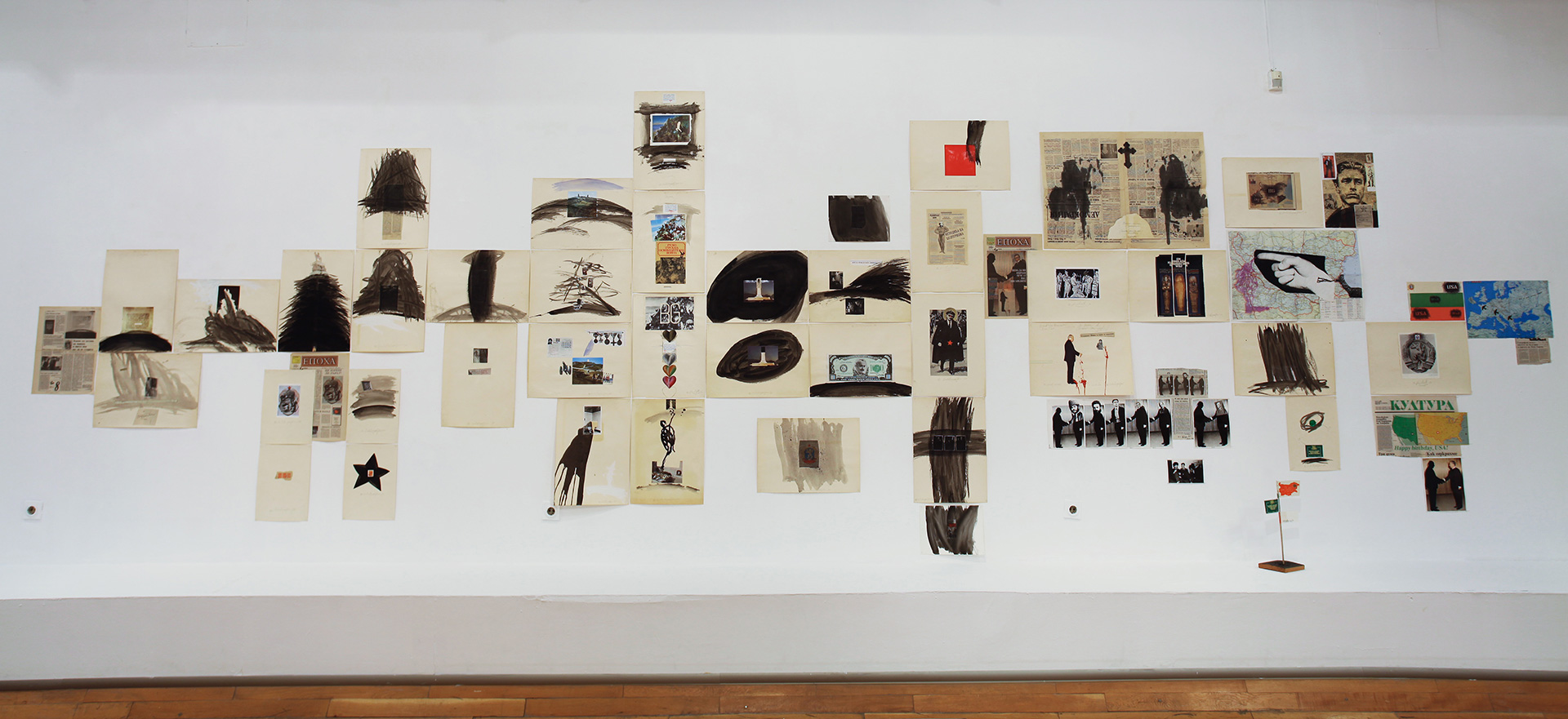installation
drawings, collages,
text, objects, press clippings
dimensions variable
Installation view: “Art for Change 1985-2015”, Sofia City Art Gallery, Sofia. February - March 2015
The installation is the first publically exhibited work by the artist after he decided, in October 1990, to “come out of the closet”, acknowledge his artistic identity, and dedicate 100 % of his time to realizing his ideas first; and questioning if this is art or not – second.
The Cycle of Visual Repressions on the Sign Environment is rooted in the time of the months after the fall of the Berlin Wall and the initial chaos of the collapsing social life and public order. It is a witness to the first concerns of the so-called changes in an ex-Soviet Bloc country after 1989 and the collapse of totalitarian regimes in Eastern Europe.
The cycle consists of over 50 individual pieces – “trials” attempting to “erase”, “deface” and otherwise subject to artistic “repression” with brush, ink and scissors some powerful visual images and signs from the heated up visual culture of the time – some that symbolized the recent communist past, others – the pre-communist past. While testing the resistance to change of new and old images from the sign environment, the artist was de facto enacting a prophetic gesture – throughout the decades since 1989, the process of renaming and reshaping history is still going on at full speed. For instance, the cycles of destruction/erection of monuments and reshaping the historical narrative, is but one such line of societal life to this day.
In the cycle one can see the first “signs” that the process of transformation will not be fast or easy – in some of these drawings the artist “tested” the most famous monuments in Sofia – the monument to the Soviet Army, and to the Tsar Liberator - Alexander II, a monument that has featured prominently in his later works too. Or the monument at Shipka Pass on top of the Balkan Mountains where the most important battle for the construction of the modern day Bulgarian identity was fought in 1877 – it is given a second monument so that this place of memory becomes an even more fortified point of identity. Or the post stamp from the 1930s with the profile of the ex-king of Bulgaria Boris III that had already been defaced in the late 1940s by the new totalitarian regime by rubber-stamping on each small piece of paper an appeal to collect rags… – in this cycle the stamp is outlined with a black five-pointed star.
The conceptual motivation of the cycle in text, as well as a number of the pieces were published in the printed media of the time thus establishing the genre of “demontage” as a visual procedure, in the words of the artist himself.
